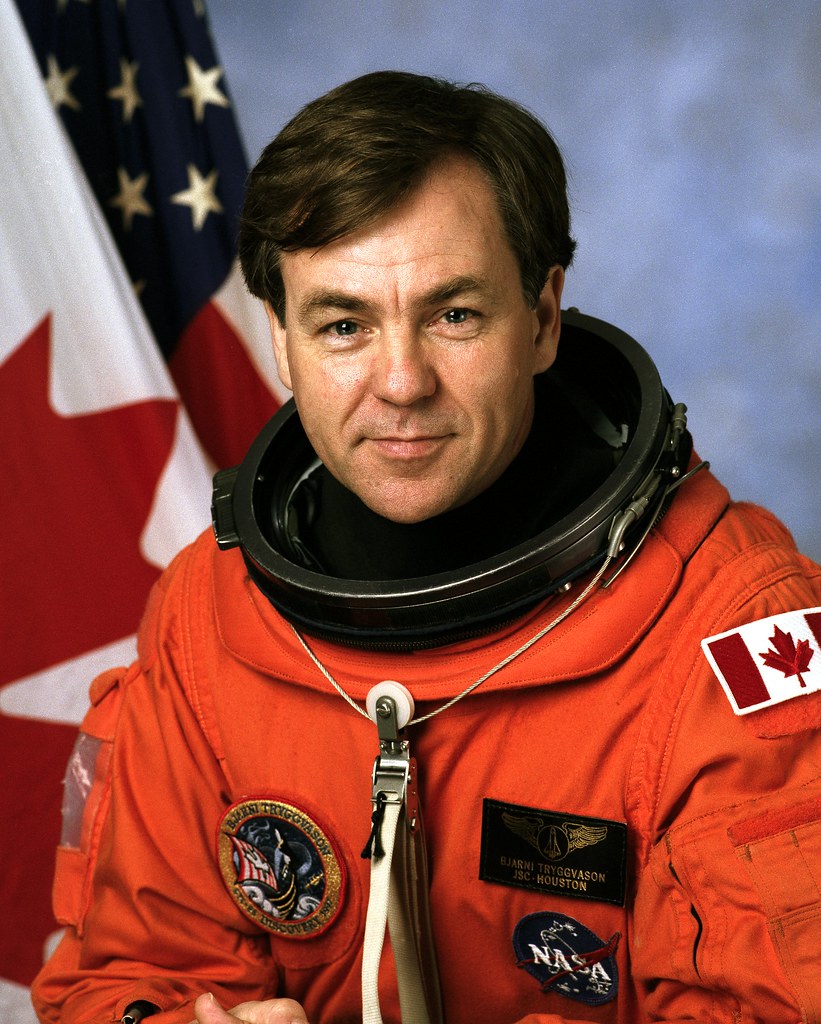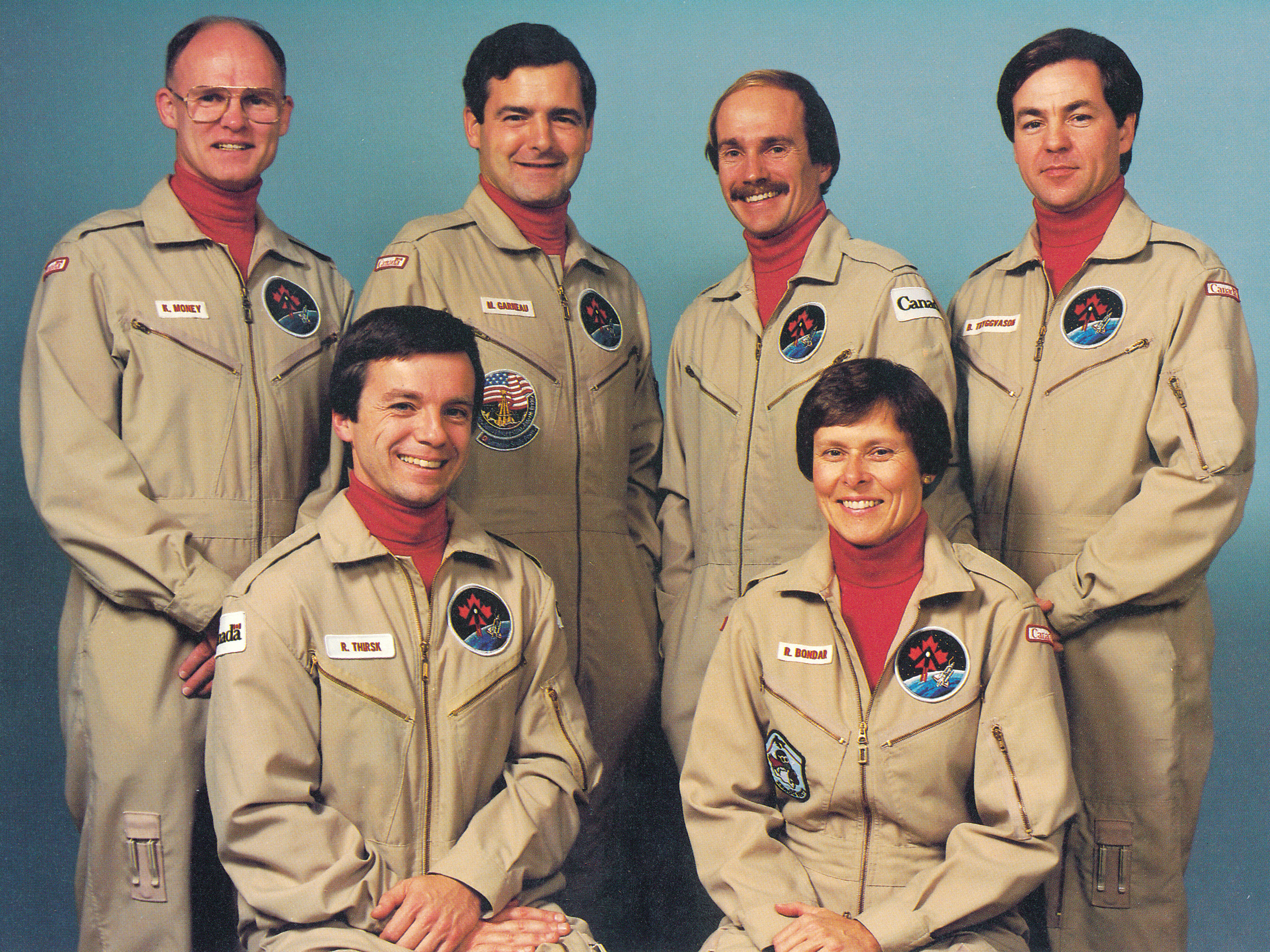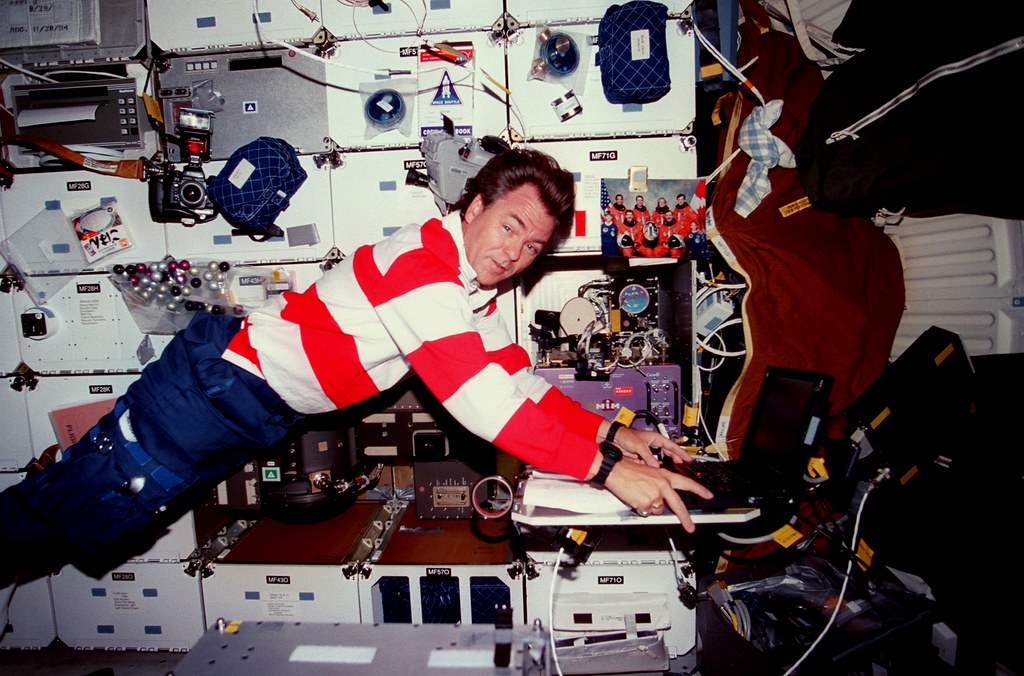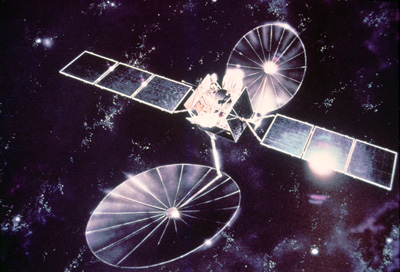Bjarni Valdimar Tryggvason, engineer, pilot, astronaut, scientist, educator (born 21 September 1945 in Reykjavik, Iceland; died 5 April 2022 in London, ON). Bjarni Tryggvason was one of the original six Canadian astronauts selected by the National Research Council in 1983. (See also Canadian Space Agency.) In 1997, he participated in the STS-85 mission and flew aboard NASA’s Discovery space shuttle. He was an associate member of the Society of Experimental Test Pilots and the recipient of numerous awards and honours throughout his career.

Early Life and Education
Bjarni Tryggvason was still a child when his family immigrated to Canada. He attended elementary school in Nova Scotia before moving to British Columbia, where he completed elementary school and high school. Tryggvason attended the University of British Columbia and, in 1972, obtained a bachelor of applied science degree in engineering physics. He later completed postgraduate work in engineering with specialization in applied mathematics and fluid dynamics at the University of Western Ontario (now Western University) in London.
In later life, Tryggvason recalled that the launch of Sputnik by the USSR in 1957 had a profound impact on him. In a 2009 interview with author John Melady, Tryggvason said that “it was the launch of Sputnik that gave me a kind of motto or purpose in life that I never had up until that time.” Tryggvason spent weekends, some evenings and two summers at the Royal Canadian Air Force Reserve in Comox, British Columbia, learning everything he could about planes (see Royal Canadian Air Force). He participated in search-and-rescue operations from the Air Force Reserve base at Comox on Vancouver Island and took flying instruction. By the time he started university, he had earned his private pilot’s licence. He later attained a commercial pilot’s licence. Tryggvason completed a captaincy check in a jet trainer with the Royal Canadian Air Force.
Career in Science
In 1972–73, Bjarni Tryggvason was a meteorologist with the cloud physics group at the Atmospheric Environment Service (now the Meteorological Service of Canada) in Toronto (see Meteorology). He then worked as a research associate in industrial aerodynamics at the Boundary Layer Wind Tunnel Laboratory at Western University from 1974 to 1979. He was also a guest research associate at Kyoto University in Japan in 1979 and at James Cook University in Australia in 1980. He was a lecturer in applied mathematics at Western University from 1980 to 1982 and a research officer at the Low Speed Aerodynamics Laboratory at the National Research Council Canada in Ottawa from 1982 to 1984. Tryggvason also taught graduate courses in structural dynamics and random vibrations at the University of Ottawa and Carleton University from 1982 to 1992.
Did you know?
He was one of the leading researchers assisting the Royal Commission in the investigation of the sinking of the Ocean Ranger oil rig in 1982.
In addition to his academic research and teaching, Tryggvason was a flight instructor with thousands of hours as a pilot and experience piloting many kinds of aircraft.
Canadian Astronaut

In December 1983, Bjarni Tryggvason was selected by the National Research Council Canada to become one of the original six Canadian astronauts for the Canadian Astronaut Corps (see Canadian Space Agency). Tryggvason was selected alongside Marc Garneau, Roberta Bondar, Ken Money, Steve MacLean and Robert Thirsk. Participation in NASA projects was delayed for all of the astronauts — except Marc Garneau — due to funding shortages and the Challenger space shuttle accident of 28 January 1986.
Tryggvason was the project engineer for the Space Vision System Target Spacecraft, which was deployed on the STS-52 mission in October 1992. On that same mission, he was Steve MacLean’s backup payload specialist for the CANEX-2 experiments. Tryggvason also served as the principal investigator for several projects, including the development of the Large Motion Isolation Mount (LMIM), frequently used on the NASA Boeing KC-135 and DC-9 aircraft. He was also involved with the Canadian-developed Microgravity Vibration Isolation Mount (MIM), which was used on the Russian space station Mir from April 1996 to January 1998. This project was undertaken in support of Canadian and American experiments in fluid physics and material science.
Space Shuttle Crew Member
On 7 August 1997, Bjarni Tryggvason was a payload specialist aboard the Discovery space shuttle on the STS-85 mission. The crew deployed the CRISTA-SPAS-2 satellite and tested a predecessor to the remote manipulator system outside the Japan Aerospace Exploration Agency’s Kibo module on the International Space Station (ISS). Tryggvason’s primary role was to test the upgraded MIM and perform fluid dynamics experiments to examine sensitivity to spacecraft vibrations. The goal of this work was to develop a better understanding of the necessity of the MIM and to study the effect of vibrations on experiments performed aboard the ISS. He also developed an electromagnetic levitation platform that was used on the ISS.

The Discovery’s lift-off from Kennedy Space Center in Florida was witnessed by a delegation from Iceland that included President Ólafur Ragnar Grímsson. The mission lasted 11 days, 19 hours and 18 minutes. The shuttle orbited the Earth 185 times, covering 4.7 million miles (7.56 million km).
Later Career
In August 1998, Bjarni Tryggvason joined NASA Astronaut Group 17 and received two years of physical and academic training for a possible flight as a mission specialist for the space shuttle and ISS. Despite his training, he did not go into space for a second time. He served as a crew representative for the Shuttle Avionics Integration Laboratory (SAIL), which tested shuttle flight software prior to onboard use. He was also involved in integrated simulations on the Astronaut Training Facility at NASA Johnson Space Center.
In September 2005, Tryggvason was seconded from the Canadian Space Agency (CSA) to Western University, where he became a visiting professor. Tryggvason also taught as an instructor at the International Test Pilots School in London, Ontario, while still working as a test pilot himself. He officially retired from the CSA in 2008.
Did you know?
Bjarni Tryggvason flew in competitive aerobatics and performed in air shows. In 2009, to mark the centennial of the first flight in Canada and the British Empire, he flew a replica of Alexander Graham Bell’s Silver Dart.
Personal Life
Tryggvason died at age 76 and was survived by his ex-wife, Lilyanna Zmijak, and adult children, Michael Kristjan and Lauren Stephanie Chironne.
Legacy
In 2003, Bjarni Tryggvason was among eight Canadian astronauts honoured by Canada Post with a portrait on a postage stamp. He was the author of more than 50 published papers and held three patents.
Honours and Awards
- NASA Space Flight Medal, NASA (1997)
- Honorary Doctor of Science, University of Western Ontario (now Western University) (1998)
- Honorary Doctorate of Philosophy, University of Iceland (2000)
- Order of the Falcon, Iceland (2000)
- Innovators Award, Canadian Space Agency (2003)
- Inductee, Canada’s Aviation Hall of Fame (2020)

 Share on Facebook
Share on Facebook Share on X
Share on X Share by Email
Share by Email Share on Google Classroom
Share on Google Classroom
















